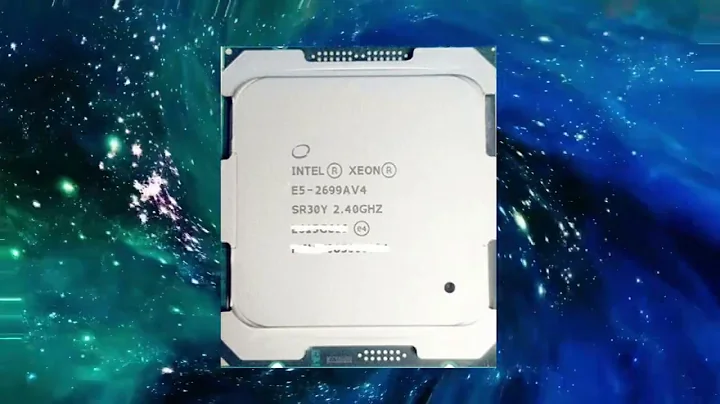Mastering FPGA & CPLD: Unveiling the Digital Marvels
Table of Contents
- Introduction to CPLD and FPGA
- Understanding CPLD
- What is CPLD?
- Architecture of CPLD
- Applications of CPLD
- Exploring FPGA
- What is FPGA?
- FPGA Architecture
- Advantages of FPGA
- Comparison between CPLD and FPGA
- Differences in Architecture
- Speed and Complexity
- Versatility and Applications
- Why FPGA is More Popular
- Complex Architecture
- Security and Non-volatile Memory
- Resources and Versatility
- Embedded Memory Elements in FPGA
- Block RAMs
- LUTs and Flip-Flops
- Shift Registers
- Introduction to JTAG
- What is JTAG?
- Advantages in Industrial Sector
- JTAG in Circuit testing and Debugging
- Differences between Spartan 3 and Spartan 6
- Architectural Variances
- Connectivity and Features
- Overview of CPLD Board
- Components and Features
- Comparison with FPGA Board
- Conclusion
Introduction to CPLD and FPGA
In the realm of digital electronics, two prominent technologies reign supreme: Complex Programmable Logic Devices (CPLD) and Field Programmable Gate Arrays (FPGA). These versatile devices offer immense potential for various applications, each with its unique set of characteristics and advantages.
Understanding CPLD
CPLD: The Coarse-Grained Logic Marvel
What exactly is CPLD, and how does it function within the digital landscape? CPLDs, short for Complex Programmable Logic Devices, are sophisticated integrated circuits renowned for their ability to implement complex digital logic. Unlike their FPGA counterparts, CPLDs are characterized by their coarse-grained architecture, comprising a network of programmable logic blocks interconnected by a matrix of programmable interconnects.
Within the architecture of CPLDs, the logic blocks are typically structured to support a myriad of logical operations, ranging from basic combinational logic to more intricate sequential logic. Additionally, CPLDs often incorporate flip-flops alongside their logic blocks, enabling the implementation of sequential circuits within the device.
CPLD Applications: Where Logic Meets Innovation
The applications of CPLDs span a broad spectrum, owing to their versatility and computational capabilities. From industrial automation to consumer electronics, CPLDs find utility in diverse domains. They are frequently employed in tasks requiring complex logic manipulation, such as digital signal processing, data logging systems, and signal conditioning units. Furthermore, CPLDs serve as the backbone of numerous embedded systems, facilitating rapid prototyping and development cycles.
Exploring FPGA
Unraveling the Mysteries of FPGA
In the ever-evolving landscape of digital design, Field Programmable Gate Arrays (FPGAs) stand as stalwarts of flexibility and adaptability. But what exactly distinguishes FPGAs from their CPLD counterparts? FPGAs, or Field Programmable Gate Arrays, represent a paradigm shift in digital logic design, offering unparalleled flexibility and reconfigurability. Unlike traditional ASICs (Application-Specific Integrated Circuits), FPGAs can be dynamically programmed and reprogrammed to implement a wide array of digital circuits.
FPGA Architecture: The Fabric of Innovation
At the heart of FPGA architecture lies a labyrinth of configurable logic blocks (CLBs), interconnected by programmable routing resources. These CLBs comprise a versatile mix of Look-Up Tables (LUTs), flip-flops, and other auxiliary components, providing a rich tapestry for digital logic implementation. Moreover, FPGAs often incorporate embedded memory elements, such as Block RAMs and shift registers, further enhancing their computational prowess.
Advantages of FPGA: The Powerhouse of Versatility
The allure of FPGA technology lies in its myriad advantages over traditional CPLDs. Firstly, FPGAs offer unparalleled flexibility, allowing designers to rapidly iterate and optimize their designs without the need for costly hardware revisions. Additionally, FPGAs boast superior computational performance, making them ideal for tasks requiring high-speed signal processing or complex algorithm execution. Furthermore, FPGAs excel in applications demanding reconfigurable hardware, such as software-defined radio (SDR), image processing, and cryptographic acceleration.
Comparison between CPLD and FPGA
Divergent Paths: Contrasting Architectures
While CPLDs and FPGAs share a common goal of implementing digital logic, they diverge significantly in their architectural implementations. CPLDs, with their coarse-grained architecture, excel in applications requiring relatively simple logic functions with low to moderate complexity. In contrast, FPGAs embrace a fine-grained architecture, offering a wealth of resources for implementing intricate logic circuits with high degrees of parallelism.
Speed and Complexity: Racing Towards Efficiency
In the realm of performance, FPGAs hold a distinct edge over CPLDs. Thanks to their fine-grained architecture and dedicated routing resources, FPGAs can execute complex logic functions at significantly higher clock speeds than CPLDs. This makes FPGAs the preferred choice for applications demanding real-time processing or high-throughput computations.
Versatility and Applications: Tailoring Solutions to Needs
When it comes to versatility, FPGAs emerge as the undisputed champions. With their reconfigurable architecture and vast array of resources, FPGAs can adapt to a wide range of applications, spanning from telecommunications and networking to aerospace and defense. CPLDs, while capable in their own right, pale in comparison to the sheer versatility and adaptability offered by FPGAs.
Why FPGA is More Popular
Unraveling the Enigma of FPGA's Popularity
In the grand tapestry of digital design, FPGAs stand as towering pillars of innovation and versatility. But what precisely makes FPGAs the darling of designers and engineers alike? The answer lies in a myriad of factors, each contributing to FPGA's meteoric rise to prominence.
Complex Architecture: A Symphony of Logic
One of the primary reasons behind FPGA's popularity Stems from its complex architectural design. Unlike CPLDs, which offer a coarse-grained fabric for logic implementation, FPGAs boast a fine-grained architecture comprising a vast array of configurable logic blocks (CLBs), interconnects, and embedded resources. This fine-grained nature enables designers to implement highly intricate logic circuits with unparalleled precision and efficiency.
Security and Non-volatile Memory: Safeguarding Innovation
In addition to their architectural prowess, FPGAs offer enhanced security features and non-volatile memory capabilities, making them ideal for mission-critical applications. By incorporating built-in security mechanisms and non-volatile configuration storage, FPGAs ensure the integrity and confidentiality of sensitive designs, guarding against unauthorized access and tampering.
Resources and Versatility: Empowering Innovation
Furthermore, FPGAs provide designers with a veritable treasure trove of resources, ranging from configurable logic blocks to embedded memory elements. This abundance of resources empowers designers to unleash their creativity and innovation, pushing the boundaries of what's possible in digital design. Whether it's implementing complex algorithms, accelerating cryptographic operations, or deploying custom hardware accelerators, FPGAs offer the resources and flexibility needed to turn visions into reality.
Embedded Memory Elements in FPGA
Unveiling the Hidden Gems of FPGA
Within the intricate tapestry of FPGA architecture lie embedded memory elements, serving as the bedrock of computational prowess and versatility. These embedded memory elements, ranging from Block RAMs to shift registers, play a pivotal role in shaping the functionality and performance


 < 5K
< 5K
 1
1


 < 5K
< 5K
 91.92%
91.92%
 4
4


 < 5K
< 5K
 100%
100%
 2
2


 16.2K
16.2K
 41.03%
41.03%
 0
0


 < 5K
< 5K
 0
0
 WHY YOU SHOULD CHOOSE TOOLIFY
WHY YOU SHOULD CHOOSE TOOLIFY

































